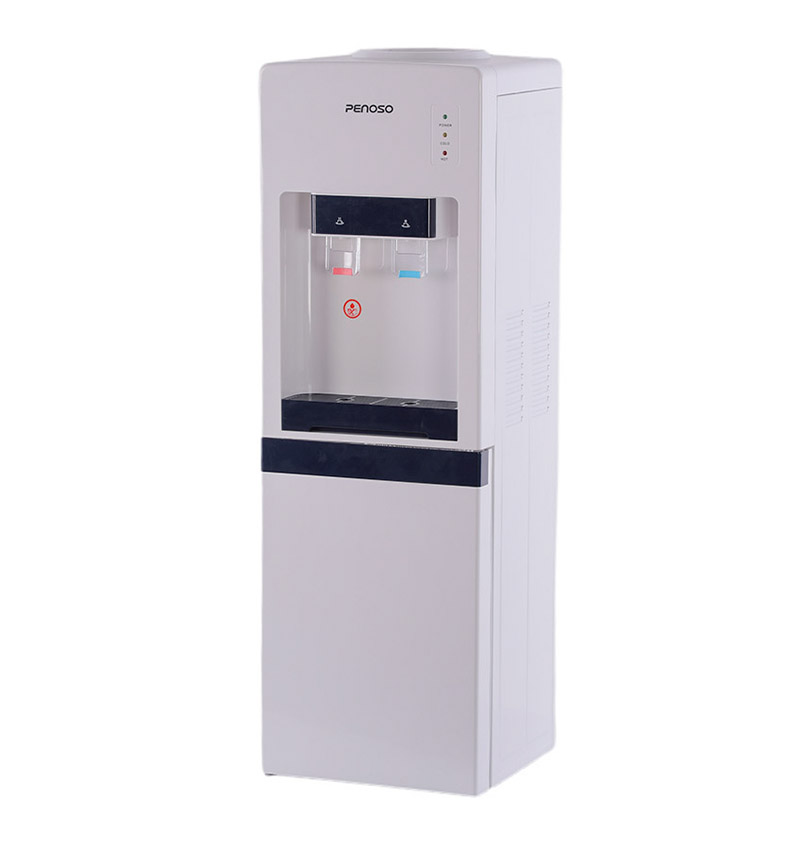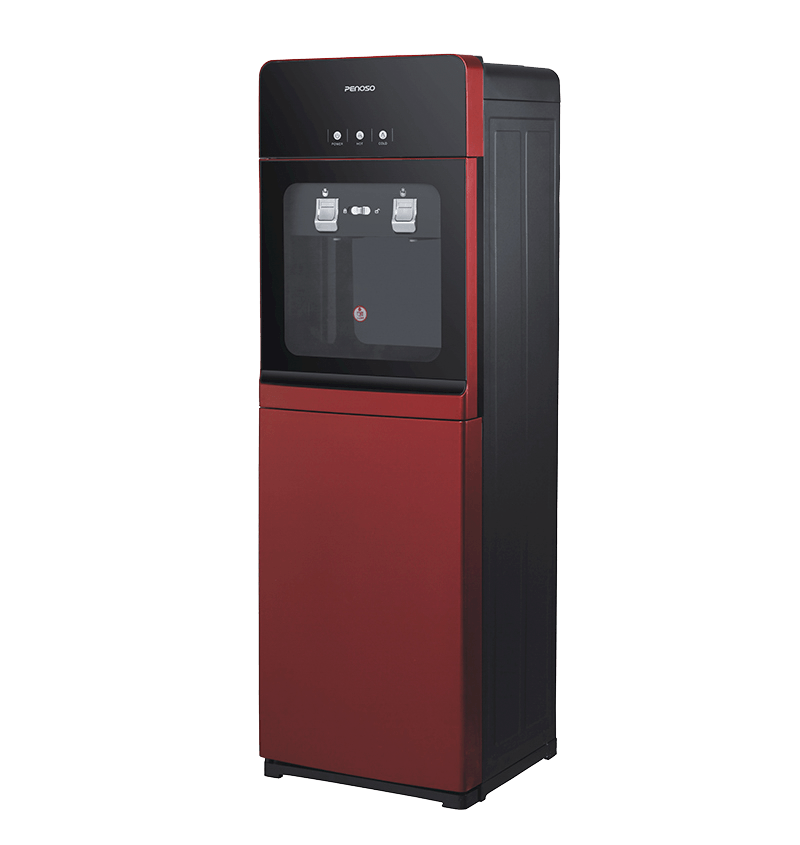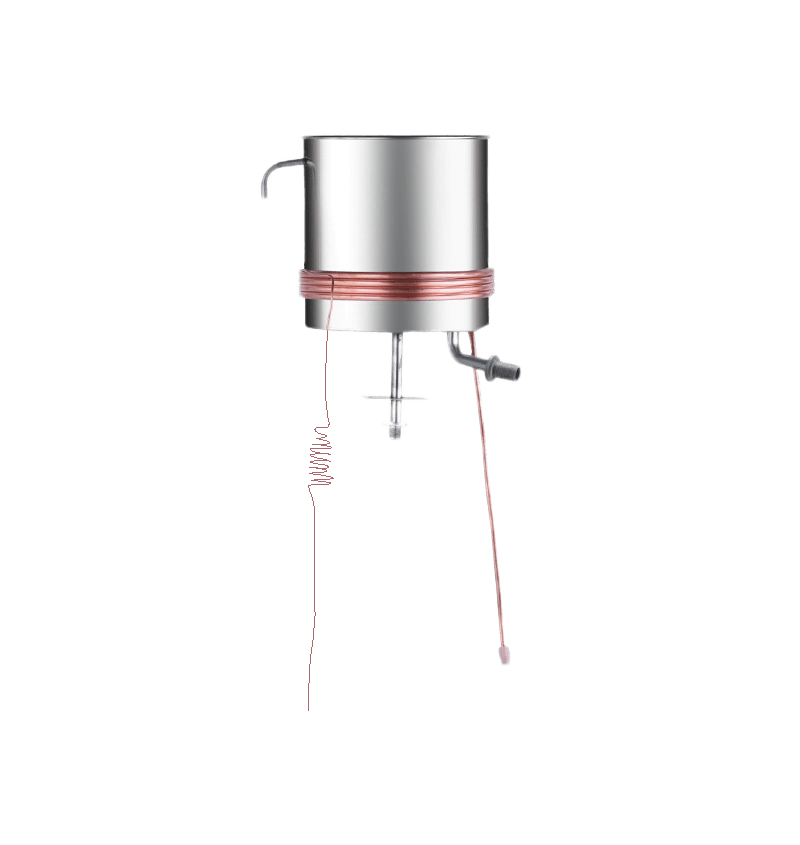Definition of pipeline water dispenser and traditional water dispenser
Pipeline water dispenser is a drinking water device that automatically provides tap water filtration, cooling and heating by directly connecting to the water pipes in the building. It does not rely on bottled water, but achieves continuous water supply by connecting to the pipeline water source. Traditional water dispensers usually rely on bottled water, which comes from pre-assembled water bottles and processes water quality through internal filtering, heating and cooling systems.
Differences in water sources
Pipeline water dispenser:
Pipeline water dispenser is directly connected to the tap water pipeline and relies on the water source in the building. It uses a built-in filtration system to filter water impurities in the pipeline to make it meet drinking water standards. Pipeline water dispensers use a long-term supply of water, so there is no need to replace the water bottle.
Traditional water dispenser:
The water source of traditional water dispensers usually comes from large water bottles, each of which has a large capacity, generally 18.9 liters. After using the water bottle, the user needs to replace the bottled water, and the transportation and storage of the water bottle often takes up extra space.
Installation and ease of use
Pipeline water dispensers:
The installation of pipeline water dispensers requires professionals to connect the equipment to the water pipe system. Although the initial installation is more complicated, once the installation is completed, users can use it for a long time without frequently changing water bottles. In addition, pipeline water dispensers have the advantage of saving storage space because there is no need to store water bottles.
Traditional water dispensers:
Traditional water dispensers are relatively simple to install, and only need to place the water bottles on the water dispenser. Users can replace water bottles at any time, which is convenient and fast. However, since water bottles need to be stored and transported, the space management of using traditional water dispensers is relatively troublesome, especially when the water bottles are used up, new water bottles often need to be temporarily stored.
Differences in water quality treatment technologies
Pipeline water dispensers:
Pipeline water dispensers are usually equipped with built-in multiple filtration systems, including activated carbon filtration, reverse osmosis (RO) filtration, ultraviolet disinfection and other technologies to ensure that the tap water is fully purified and removes bacteria, impurities and harmful substances in the water. These devices also conduct regular water quality monitoring to ensure the safety of the water source.
Traditional water dispensers:
Traditional water dispensers can also be equipped with simple filtration systems, but many traditional water dispensers rely solely on bottled water for water quality. Bottled water quality is usually treated and filtered, but users cannot directly control the quality of bottled water, so the control over water quality is relatively limited.
Energy consumption and usage cost
Pipeline water dispensers:
Pipeline water dispensers may have relatively stable electricity consumption due to their perennial access to water sources. It has low operating costs and does not require the replacement of water bottles, reducing the cost of purchasing and transporting water bottles. In addition, the water volume of pipeline water dispensers is not limited by bottled water, so it is very economical when used in large offices or public places.
Traditional water dispensers:
Traditional water dispensers have high usage costs, mainly reflected in the frequent replacement of water bottles. In the long run, the cost of purchasing bottled water is high, especially for large user groups or places with high demand. In addition, the transportation and storage of bottled water also add additional logistics costs.
Space occupancy and design
Pipeline water dispensers:
Since pipeline water dispensers are directly connected to the water pipe, they do not require additional storage space for water bottles. This makes pipeline water dispensers suitable for environments with limited space, especially in places where space needs to be saved, such as offices and public places. Pipeline water dispensers are usually compact in design and modern in appearance.
Traditional water dispensers:
Traditional water dispensers require additional space to store water bottles. For places with frequent use, storing and carrying a large number of water bottles may take up a lot of space and increase the possibility of a cluttered environment. Traditional water dispensers are also relatively large in size and may not be suitable for places with smaller spaces.
Water temperature regulation and user needs
Pipeline water dispensers:
Pipeline water dispensers usually provide hot and cold water regulation functions, and the water temperature can be set according to user needs. Modern pipeline water dispensers can provide water at different temperatures, such as hot water, room temperature water and cold water, to meet different drinking water needs. Switching between hot and cold water is more convenient, especially suitable for office environments or places that need to be used for a long time.
Traditional water dispensers:
The water temperature of traditional water dispensers is usually adjusted by an internal heating or cooling system, but the temperature control range and accuracy are not as good as pipeline water dispensers. Many traditional water dispensers take a long time to heat up, and the cooling effect may be unstable, especially in the summer when the cold water supply is insufficient.
Environmental protection and sustainability
Pipeline water dispensers:
Pipeline water dispensers are more environmentally friendly because they do not rely on bottled water, which can reduce the use and disposal of plastic bottles and reduce environmental pollution. Long-term use of pipeline water dispensers can help reduce the demand for disposable bottled water, thereby having a positive impact on the environment.
Traditional water dispensers:
The bottled water used in traditional water dispensers is often plastic packaging, which brings a considerable burden to the environment. Although bottled water manufacturers usually recycle empty bottles, there is still a large problem of plastic pollution. The impact of long-term use of bottled water on the environment is more significant.
Differences in maintenance and care
Pipeline water dispensers:
Pipeline water dispensers usually require regular maintenance and inspection, especially the filtration system and water quality monitoring system need to replace the filter element or clean it regularly. These maintenance can ensure that the water quality meets the standards for a long time and prevent equipment aging.
Traditional water dispensers:
The maintenance of traditional water dispensers is relatively simple. Users only need to clean the sink regularly, replace the water bottle, etc. However, since replacing water bottles may be unhygienic, you need to pay attention to the cleaning and replacement of water bottles.
Pipeline Water Dispenser vs. Traditional Water Dispenser
|
Feature |
Pipeline Water Dispenser |
Traditional Water Dispenser |
|
Water Source |
Direct connection to the water pipeline |
Uses bottled water |
|
Installation Requirements |
Requires professional installation |
Simple installation, just place the water bottle |
|
Water Treatment |
Built-in multi-stage filtration system |
Relies on filtration in bottled water |
|
Usage Cost |
Relatively low, no need for frequent bottle replacement |
Relatively high, requires regular bottle replacement |
|
Energy Consumption |
Stable, economical for long-term use |
Requires energy for heating and cooling, higher consumption |
|
Space Occupancy |
Saves space, no need for bottle storage |
Takes up more space for storage and transportation of bottles |
|
Temperature Control |
Provides hot and cold water adjustment |
Limited temperature control, unstable cold water supply |
|
Environmental Impact |
Reduces plastic bottle usage, eco-friendly |
Relies on bottled water, generates plastic waste |
|
Maintenance & Care |
Requires regular filter checks and device cleaning |
Primarily cleaning the water reservoir and changing bottles, simpler maintenance |



 English
English عربى
عربى Português
Português Español
Español








